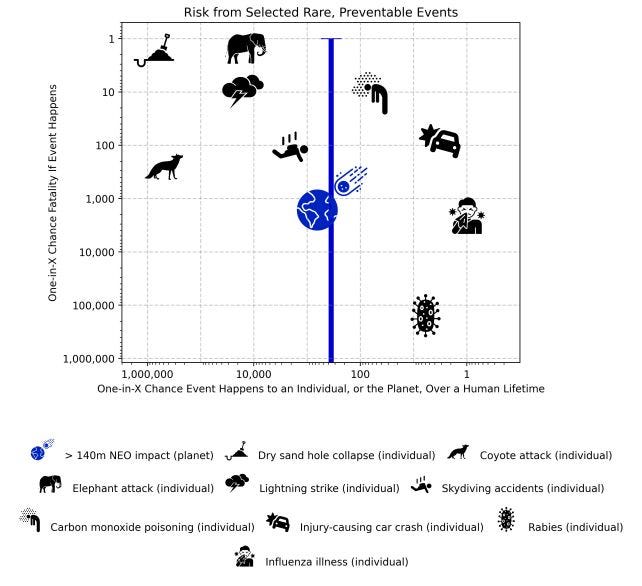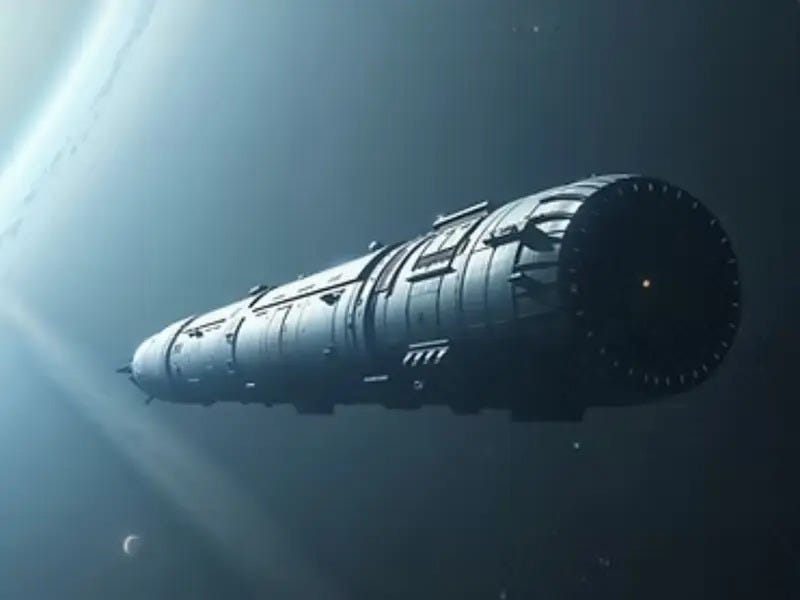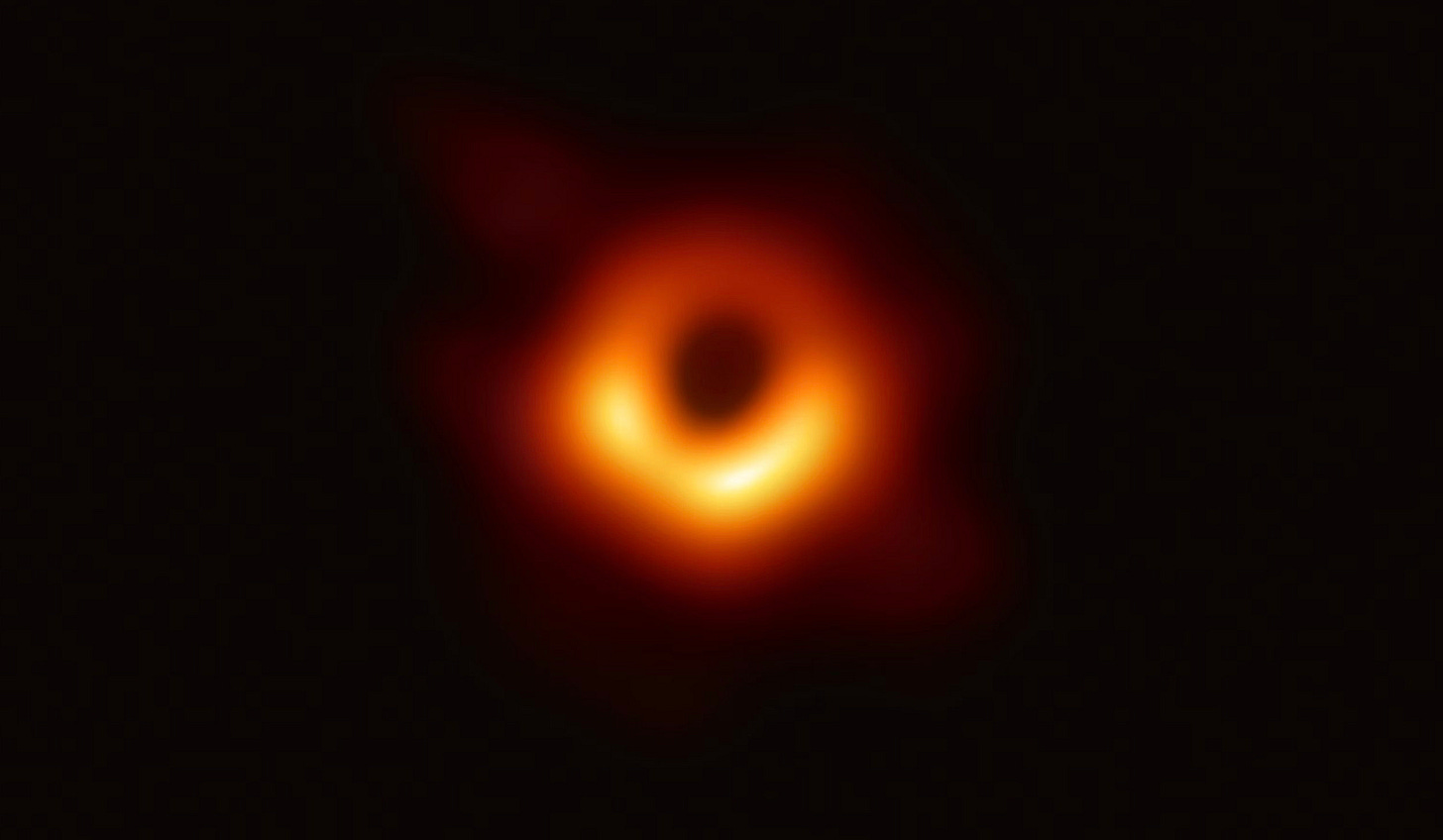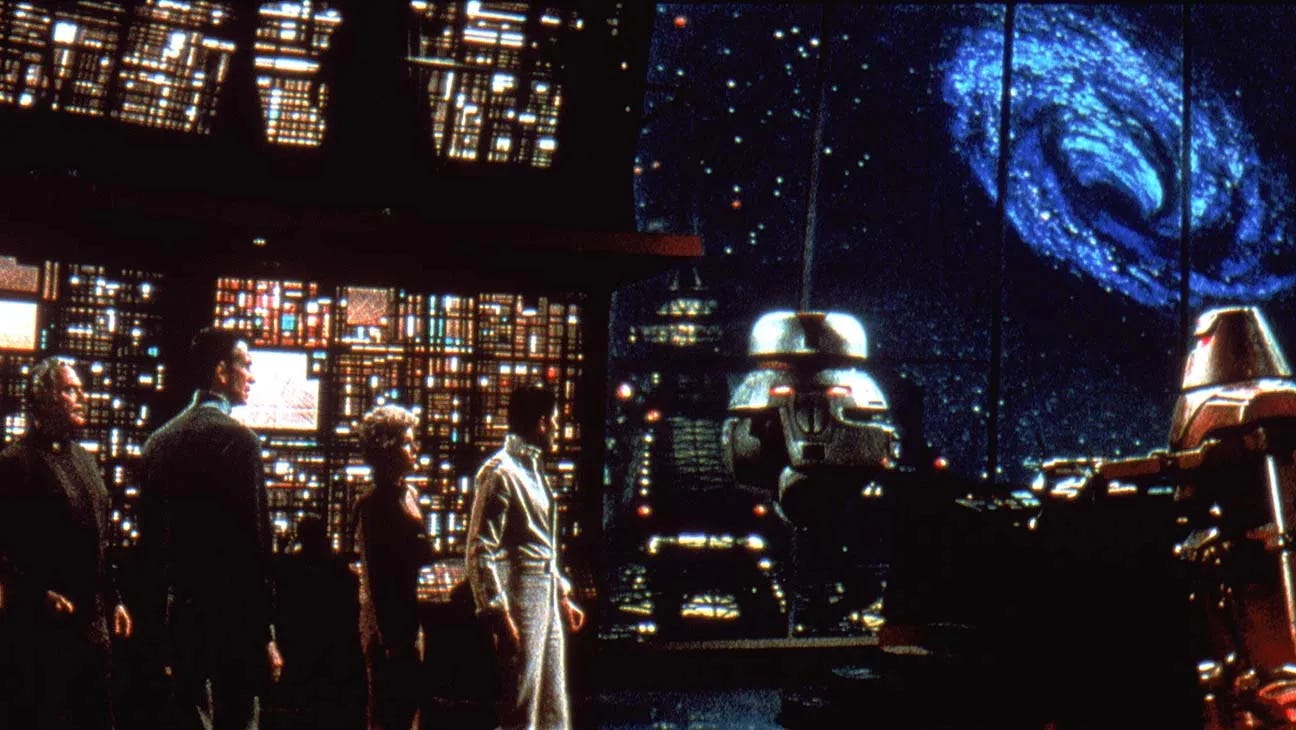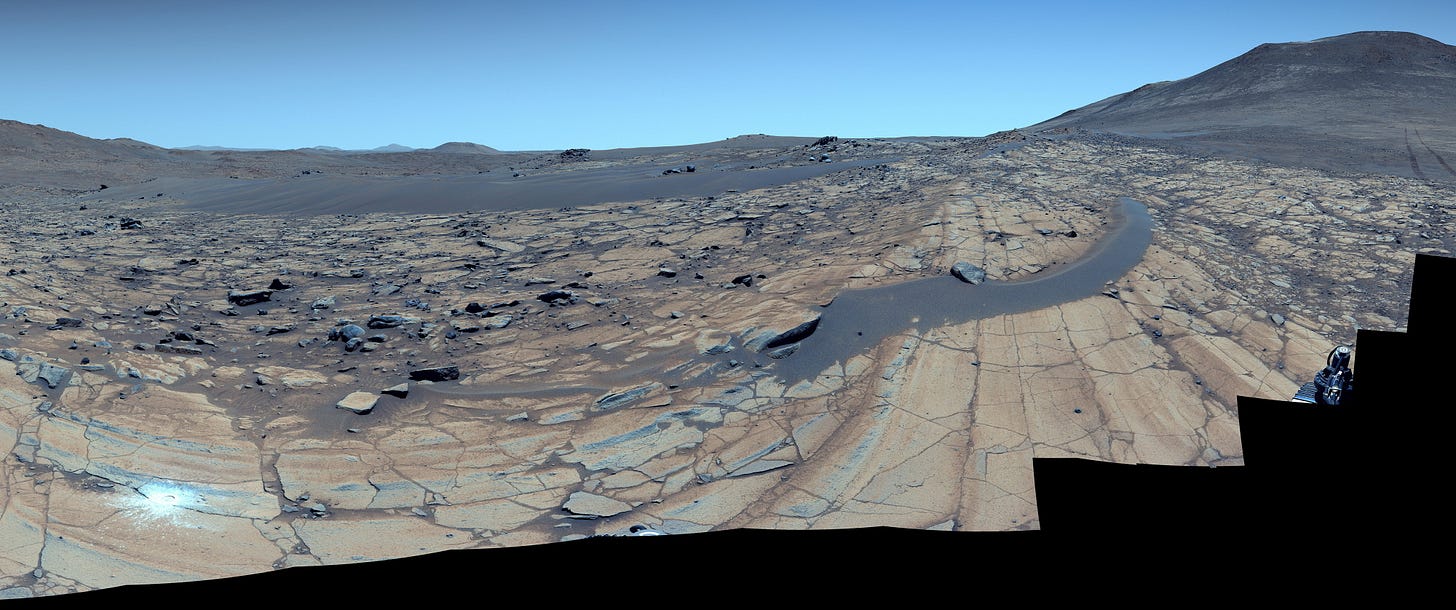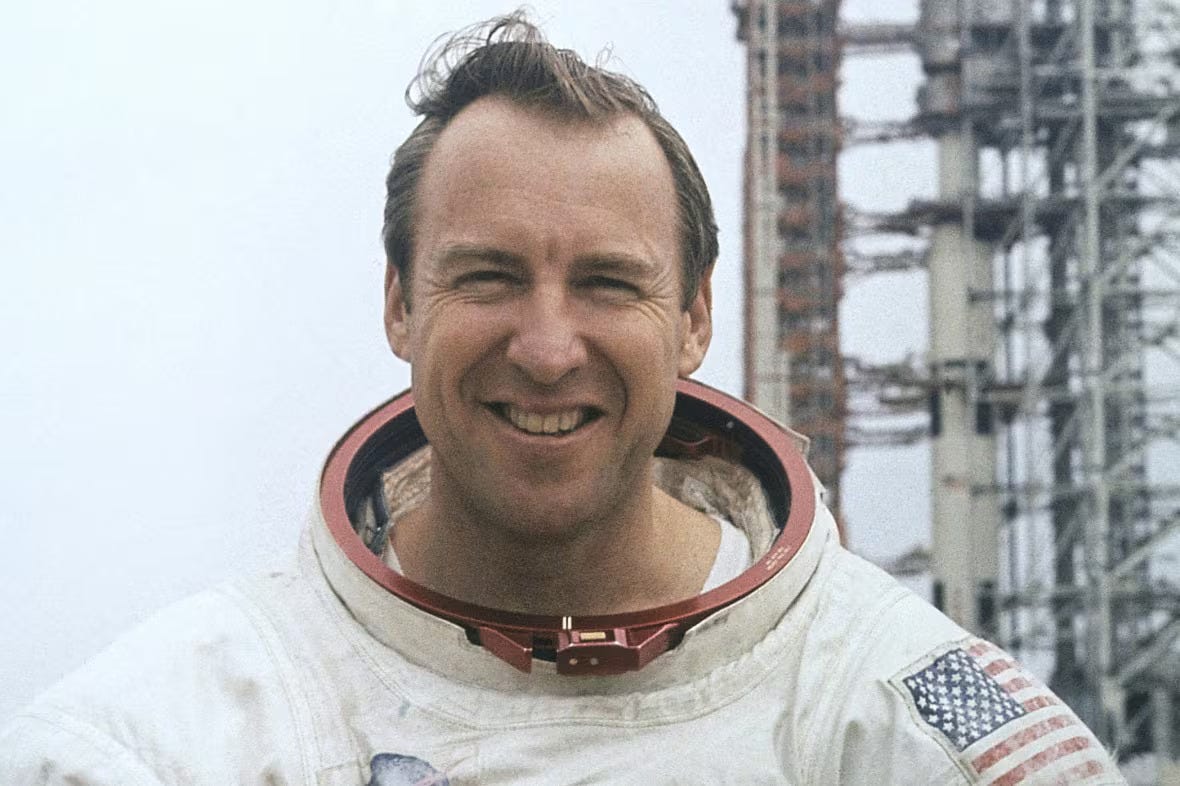The Weird Science Drop #17 ☠️ Playing Final Destination roulette
China's on course for the Moon, we're heading to the nearest star, and scientists have discovered a new colour of cat
Mbote!* Welcome to the latest TWSD. Sadly, we’re down to just six living Apollo astronauts following the death of Jim Lovell. Although he never made it to the surface of the Moon, the commander of Apollo 13 was a real legend and was played by none other than Tom Hanks in the hit film. His most famous quote will always be ‘Houston, we've had a problem’, but I’ll always prefer this mind-blower:
“I could put my thumb up to a window and completely hide the Earth. I thought, 'Everything I've ever known is behind my thumb.”
This week, we also look at a sunny day on Mars, strange ways to die, and a real-life Patrick from SpongeBob Squarepants. So make sure you hit that subscribe button!
Daniel
* Good morning in Lingala, a language in the Democratic Republic of Congo
Weird Science News
💀 If you’re a fan of the Final Destination franchise, you’ll know that death is never far away, usually hiding around the next corner, ready to pounce. Now scientists have crunched the numbers to find out how likely you are to die from a series of mishaps - everything from a car crash to a lightning strike.
First off, a team from the Olin College of Engineering focused on the likelihood you’ll get wiped out by an asteroid during your lifetime. And rather surprisingly, they found you are indeed more likely to meet your maker via a falling rock than contracting rabies.
Other ways less likely to account for your demise included being struck by lightning, attacked by an elephant or coyote, and a skydive going horribly awry. Read more on Science Alert
🐠 A new fad is sweeping the internet - ‘slow TV’ - and the latest YouTube phenomenon has been a livestream featuring sea life in the South Atlantic. The video features transparent-faced fish drifting through inky waters with only occasional chatter among marine biologists breaking the silence.
The researchers behind the video of life-forms 13,000ft under said they never expected their deep-sea expedition to become such a social media sensation, with more than 1.6 million views a day. Expedition leader Daniel Lauretta said:
"It was a huge surprise for us. It’s something that fills our hearts because we want to spread the word."
Slow TV is used for marathon coverage of an event, typically shown in real-time. It was first popularised in 2009, after the Norwegian Broadcasting Corporation broadcast a seven-hour train journey. Not thrilling, but I’m guessing rather relaxing. Read more on Fox 13
🚀 It’s full steam ahead for China’s Moon missions. The superpower is planning to put astronauts on our nearest celestial neighbour by the end of the decade, and it made a sizeable leap this week after its lunar lander aced a landing and takeoff test.
The two-person ‘Lanyue’ lander - whose name means ‘embracing the Moon’ - is just one cog in China’s ambitious plans for space, which kicked off with its Tiangong space station a couple of years ago.
Other missions coming down the pipe include a sample-return trip to Mars, sending a probe to Jupiter, and building a nuclear-powered space shuttle. Read more on Space.com
🏺 We’ve given AI a little bit of a kicking over the past couple of weeks, but here’s an example of the bright side. In just a few months, a joint team from Yamagata University’s Institute of Nazca and IBM has doubled the number of known Nazca Lines, revealing 303 previously undiscovered geoglyphs in Peru’s coastal desert thanks to the power of artificial intelligence after it sifted through terabytes of high-resolution satellite and drone imagery.
The discovery marks one of the fastest expansions of archaeological knowledge ever achieved for this UNESCO World Heritage Site. These immense designs - carved into the desert floor between 200 BC and 650 AD - depict stylised animals, plants, and geometric patterns, some stretching hundreds of metres across. Until now, many of these intricate shapes had gone unnoticed due to the scale of the desert and the limitations of traditional survey methods.
Among the new figures are depictions of felines, birds, fish, and abstract forms - designs that may have served ceremonial, astronomical, or territorial purposes. Read more on Daily Galaxy
Future of space travel
A team of engineers have got together to plan the ultimate mission to another star system. It’s all in their heads at the moment but it does illustrate the complexity and sacrifice that must be overcome if we are to become an interstellar civilisation.
The spaceship Chrysalis is designed to carry 2,400 people on a one-way trip to Alpha Centauri. But because the 25 trillion-mile journey would take around 400 years (thanks to travelling at around 0.01 the speed of light - still an impressive 6.7 million mph), those on board initially will not make it to the destination; rather, their descendants will.
Chrysalis would be capable of housing several generations, who could be shuttled to the surface of Proxima Centauri b - an Earth-size exoplanet thought to be potentially habitable.
To put the potential crew in the right frame of mind, they would be shipped off to Antarctica for 80 years so they get used to being isolated and to make sure they are mentally up for the trek.
The ship itself is 36 miles in length and would rotate to mimic Earth’s gravity, while boasting communal spaces, farms, gardens, homes, warehouses and other shared facilities, each powered by nuclear fusion reactors.
During the trip, births would be planned to ensure the population stays at a sustainable level, which the research team determined to be about 1,500 people - 900 people less than the ship's total capacity.
The plan won first place in the Project Hyperion Design Competition, a challenge that requires teams to design hypothetical multigenerational ships for interstellar travel.
You can see more about the winner and runners-up - all well worth a look - here.
To a black hole and beyond!
Talking of the future, the first mission to a nearby black hole could be launched within 30 years - using a spacecraft no heavier than a paperclip, say scientists.
Propelled by a laser beam through space at the speed of light, the ultra-lightweight craft would be sent on a century-long mission to probe the very fabric of space and time and test the laws of physics.
Astrophysicist Professor Cosimo Bambi, from Fudan University, outlined the blueprint for turning the fantastic voyage to a black hole into reality in the journal iScience. He said:
“We don’t have the technology now. But in 20 or 30 years, we might.”
The mission hinges on two key challenges - finding a black hole close enough to target and developing probes capable of withstanding the journey.
Latest research suggests there could be a black hole hanging around 20 to 25 light-years from Earth. Although finding one is still a big problem. Prof Bambi said:
“There have been new techniques to discover black holes. I think it’s reasonable to expect we could find a nearby one within the next decade.”
Using Earth-based lasers for propulsion, the ‘nano’ craft could reach a black hole 20 to 25 light-years away in about 70 years. The data it collects would then take another two decades to get back to Earth, making the total mission duration around 80 to 100 years. Prof Bambi added:
“It may sound really crazy, and in a sense closer to science fiction. But people said we’d never detect gravitational waves because they’re too weak. We did - 100 years later. People thought we’d never observe the shadows of black holes. Now, 50 years later, we have images of two.”
Photo of the Week
Just another sunny day on… Mars? The imaging team of NASA’s Perseverance Mars rover took advantage of clear skies to capture one of the sharpest panoramas of its mission on the Red Planet so far. However, space scientists say Mars isn't suddenly an ideal destination for a holiday as the blue sky is due to image processing carried out to better study the Martian terrain to prepare for future space travel. It’s actually pinkish-red.
For your eye holes
RIP Jim Lovell
Sad news indeed with the death of former NASA astronaut Jim Lovell at the ripe old age of 97. One of only three men to have been to the Moon twice, Lovell didn’t actually make it to the surface but was the headliner in the most dramatic few days in NASA’s history. Jim was the commander of the ill-fated-yet-iconic Apollo 13 mission that, after an explosion halfway out, gripped the world. He was also the navigator on Apollo 8, the first crewed mission to orbit our lunar companion, and was one of the first humans to see the awe-inspiring Earthrise.
Cool Quote
"I have not failed. I've just found 10,000 ways that won't work."
Thomas Edison
Weird Science Factoid
The Sun is 400 times larger than the Moon, but also 400 times as far away, making both objects appear to be the same size in our sky. This is why we get solar eclipses. It’s also seen as evidence for a powerful guiding hand running the universe.
Fries on the Side (aka the best of the rest)
🐌 Scientists studying the way snails can regrow their eyes hope that one day we could cure blindness for some people. The apple snail has the unique ability to regenerate its eyes after they have been cut off, and now it’s thought the amazing ability is down to a gene also found in us.
🐈 Animal experts have discovered a new colour of cat. Called salmiak, or ‘salty liquorice’, the cats have hair strands that start out black but then become white the further they grow from the follicle. The colour is caused by a recessive genetic mutation.
♥️ After 500 years, we finally understand the anatomical function of a heart feature first described by Leonardo da Vinci. Researchers used fractal mathematics to shed light on mysterious structures called trabeculae.
🐟 A rarely-seen deep sea creature has become an internet sensation after striking an uncanny resemblance to a much-loved children’s TV character - Patrick the overweight starfish from SpongeBob Squarepants. Click here to see for yourself!
🌠 A fragment of a meteorite that came crashing down on a home in the US earlier this year turned out to be older than the Earth itself. The rock was formed 4.56 billion years ago - 20 million years before our planet formed.
More from TWSD
Pain in the Neanderthals
Monkey business
AI emperor’s new clothes
Most-visited links from last week’s TWSD
The asteroid that destroyed dinosaurs had a DEADLY companion!
AI models can send ‘subliminal’ messages to each other that make them more evil
About TWSD
Science is weird, and here’s the proof. The Weird Science Drop goes where other, more-sensible newsletters fear to tread. Every week, we grab our trusty white lab coat, bunch of bubbling test tubes and world-ending robot prototype to go in search of the overlooked, under-the-radar and, above all else, most madcap science news, views and research.
About me
Daniel Smith is an ancient experienced journalist who has worked for a host of news publishers on both sides of the Atlantic. A long, long time ago, he fancied himself as an astrophysicist but instead turned out to be the worst scientist since the man who mapped out all those canals on Mars that turned out to be scratches on his telescope's lens. Luckily, he is now not working on the Large Hadron Collider inadvertently creating a black hole that would swallow the world by pressing the big red button but is safely behind a desk writing this newsletter, bringing you the fantastical underbelly of nature... The Weird Science Drop.
Have I missed anything?
Feel free to throw me an email or just fill out this super simple form. I'll read each and every one. Promise.



